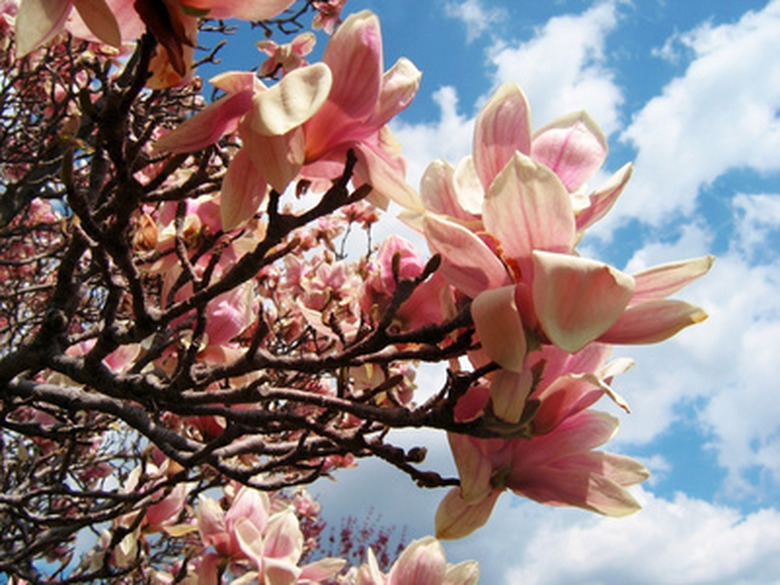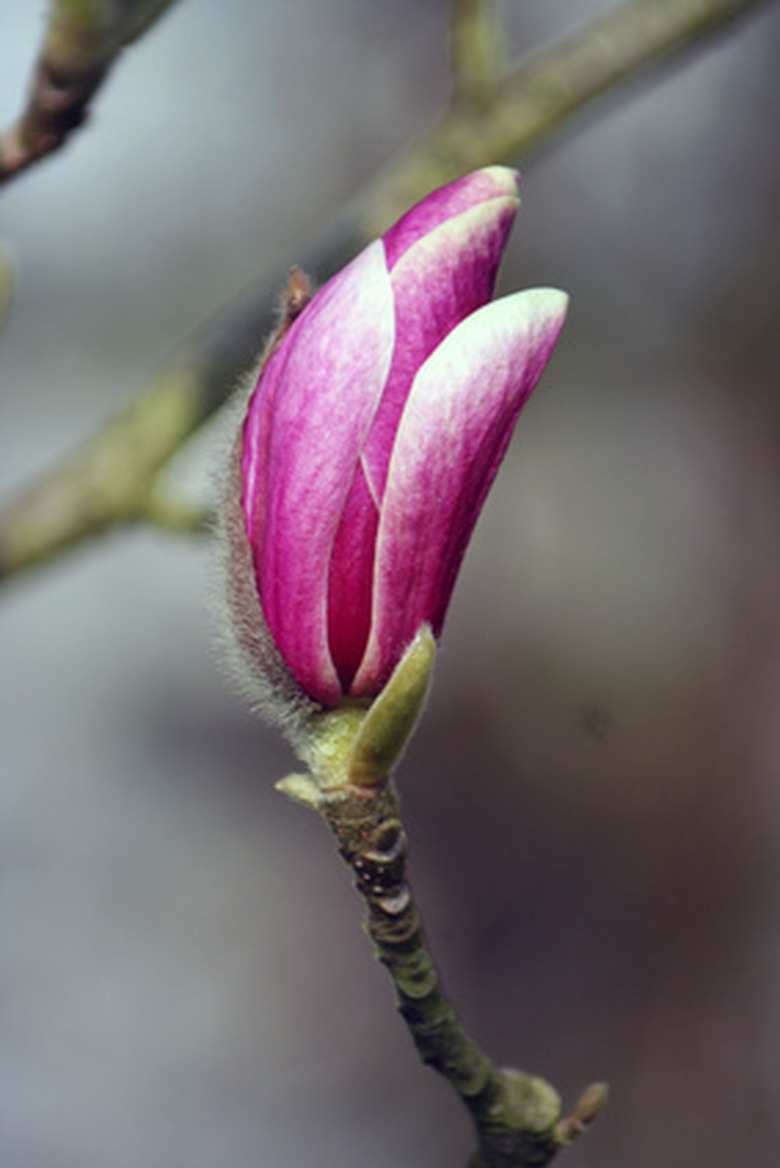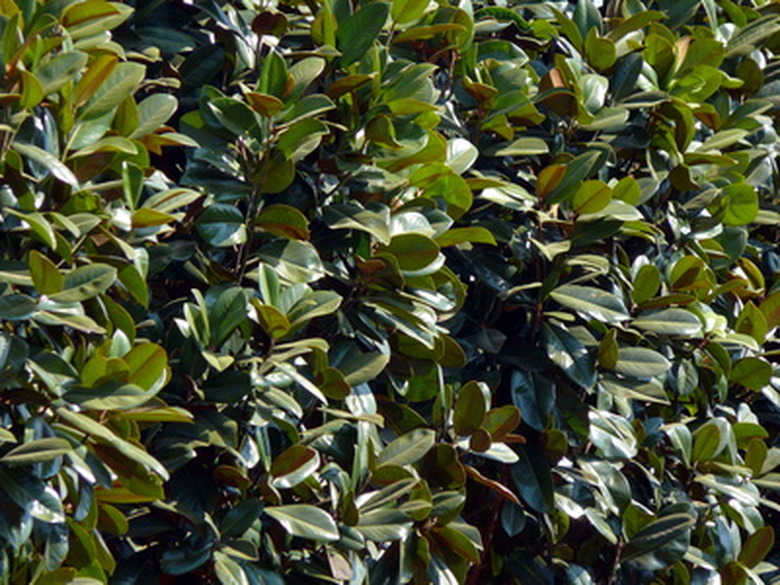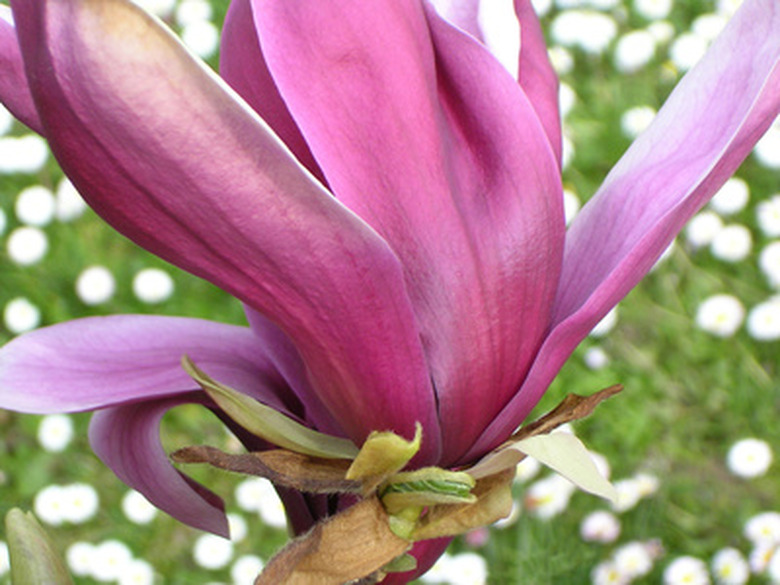Lifespan Of A Magnolia Tree
Fossils of the magnolia tree (Magnolia grandiflora) can be traced back 20 million years. The tree has changed very little over time. The magnolia can easily attain a height of 80 feet with a 40-foot spread. There are about 30 species of magnolia trees, and numerous cultivars are available to fit any gardener's needs. The cultivars are bred specifically for an abundance of flower blossoms each spring. The majority of magnolias are evergreen, but a few deciduous varieties are available.
Propagation
Propagation can be done from seeds, but they are often variable compared with the parent tree. The seedling trees can grow quite rapidly from seeds with little or no problems. Cultivars are propagated using cuttings and grafting. Seeds are rarely used for cultivars. The tree flowers when it is approximately 8 to 10 years old.
- Fossils of the magnolia tree (Magnolia grandiflora) can be traced back 20 million years.
- The cultivars are bred specifically for an abundance of flower blossoms each spring.
Sunlight and Soil
Magnolia trees thrive in full sunlight but can be planted in partial shade if the region is hot during the summer months. The tree's soil preference is moist and nutrient-rich. The tree prefers a slightly acidic to neutral soil pH.
Root System
The magnolia tree maintains the majority of its roots in the top 3 to 4 inches of soil. The tree's root spread is staggering. Magnolias produce roots that span four times the distance of the tree's overhead canopy. The tree's wide-spreading roots make transplanting an established older tree difficult.
- Magnolia trees thrive in full sunlight but can be planted in partial shade if the region is hot during the summer months.
- The tree's wide-spreading roots make transplanting an established older tree difficult.
Uses
The wood of the magnolia is often used to make veneers. The majority of magnolias are grown as landscape specimens and ornamental trees. Gardeners often have a difficult time maintaining grass under a magnolia because of the leaf accumulation at the base of the tree. The tree's leaves can take a long time to decompose.
Lifespan
Magnolia trees tend to live more than a hundred years, according to Duke University. The tree's lifespan can be dramatically affected if planted in a high-traffic area where foot traffic tamps down the root system. When the root system of an older tree is constantly trod upon, the tree becomes unable to transport the nutrients it needs to survive.
- The wood of the magnolia is often used to make veneers.
- Gardeners often have a difficult time maintaining grass under a magnolia because of the leaf accumulation at the base of the tree.





